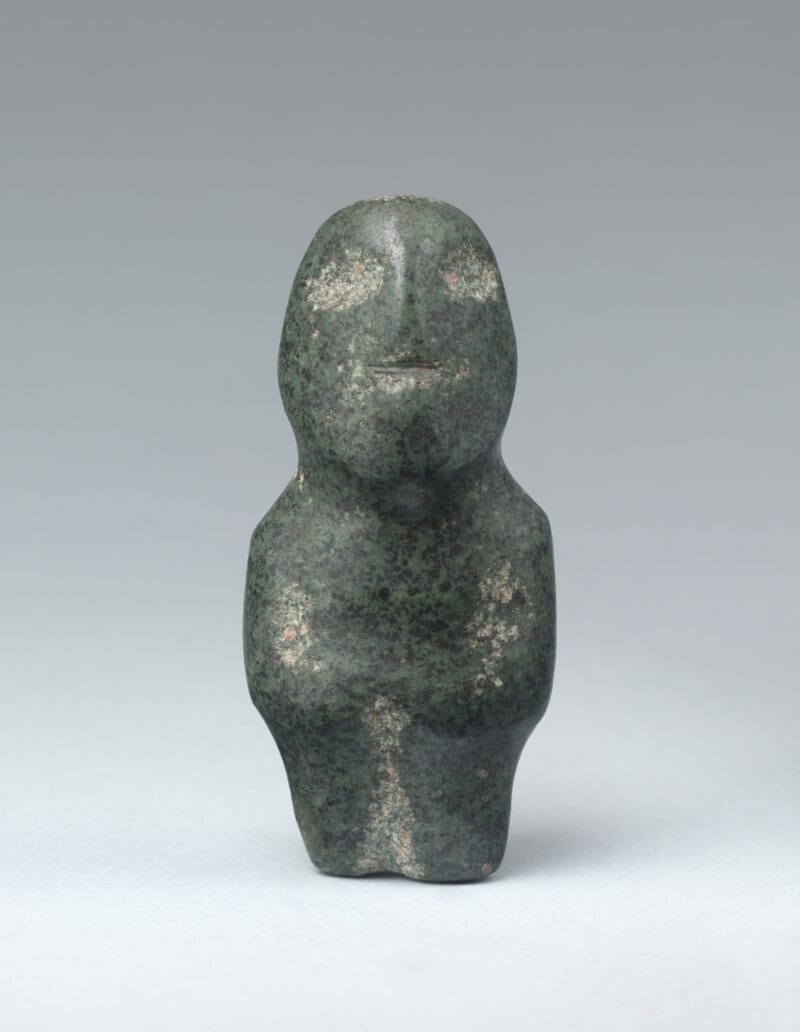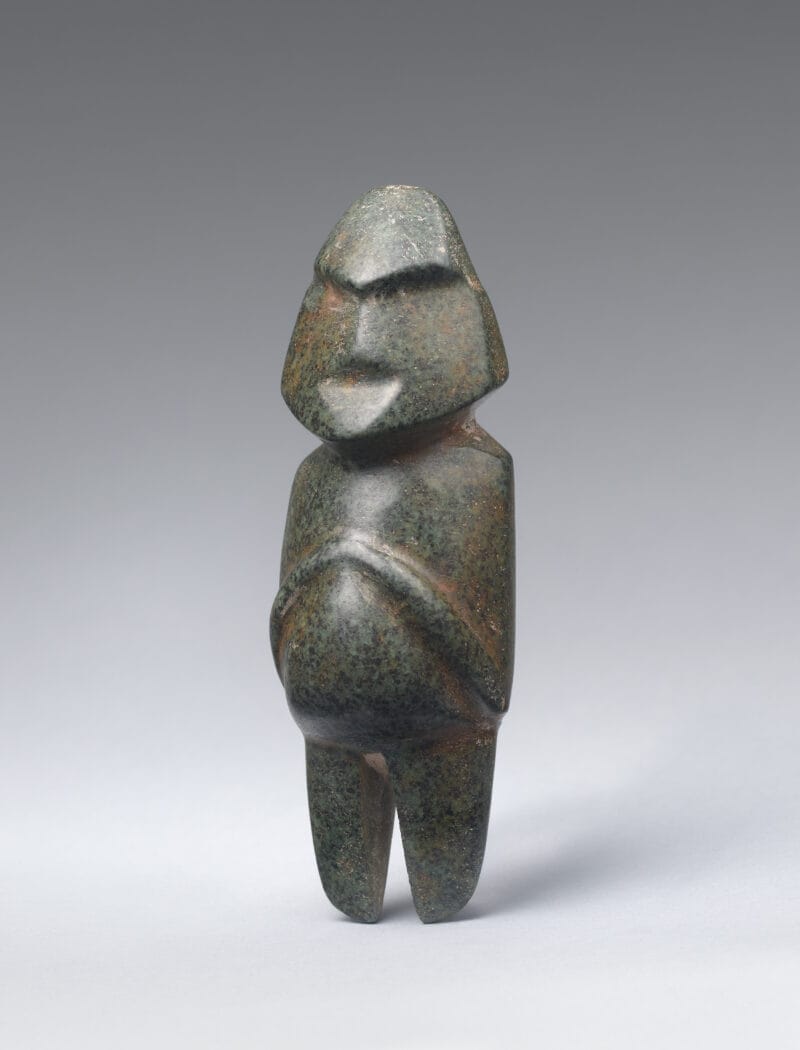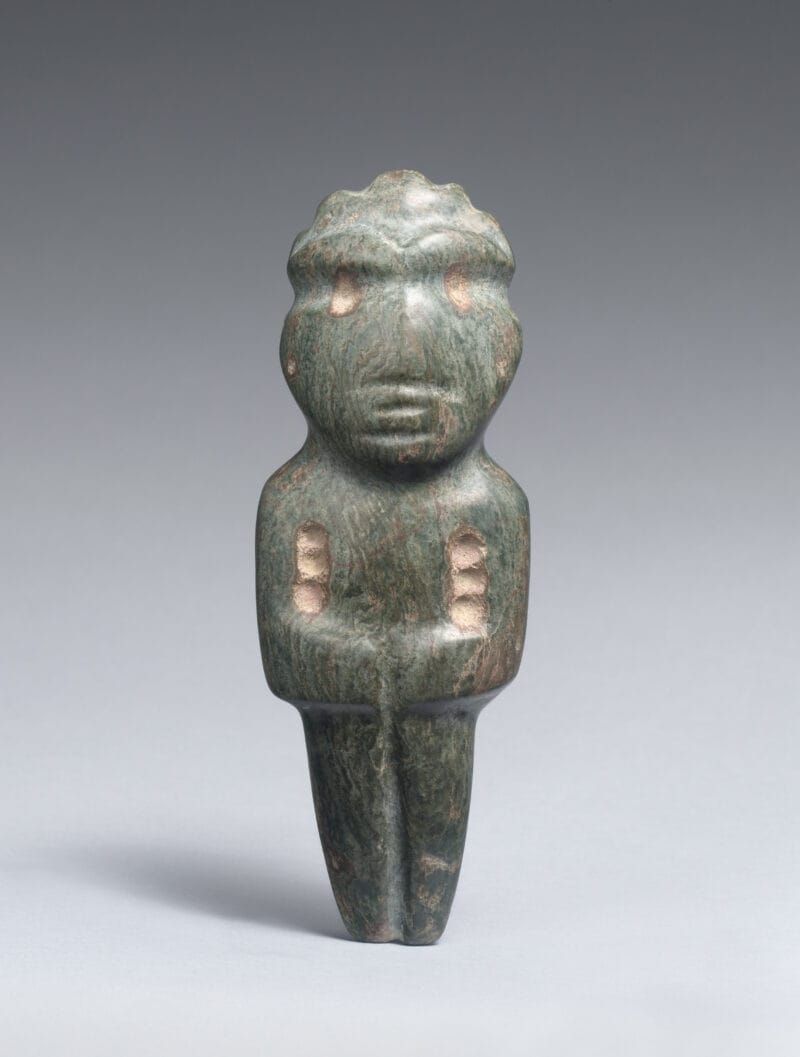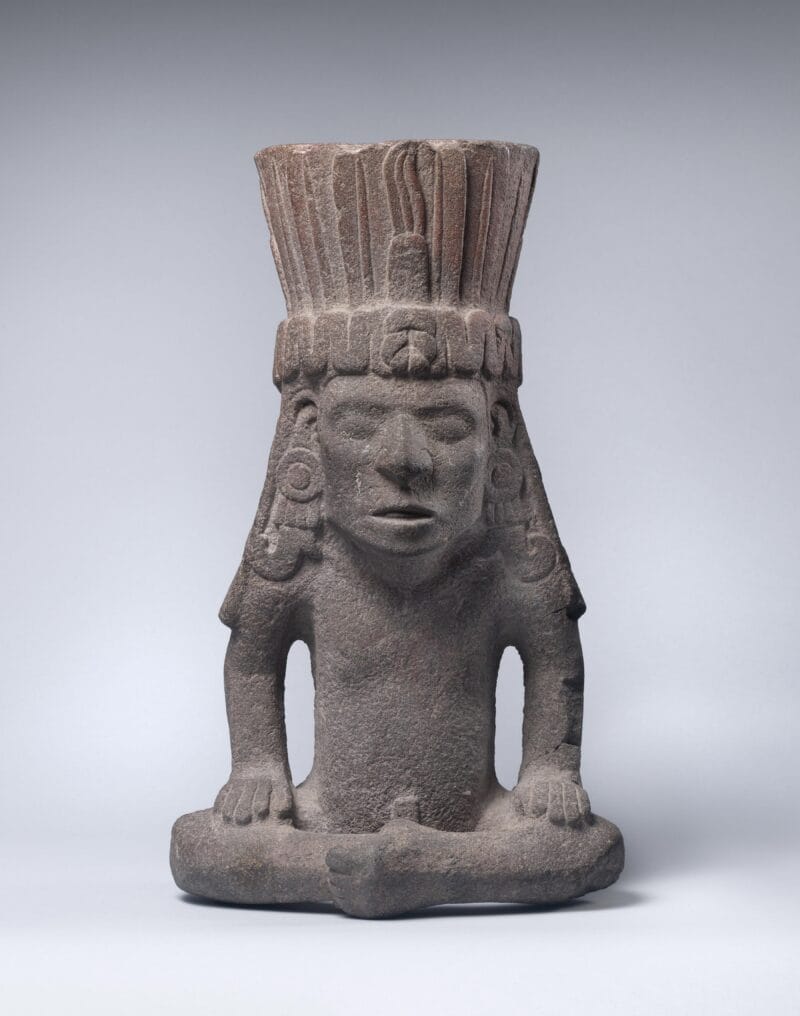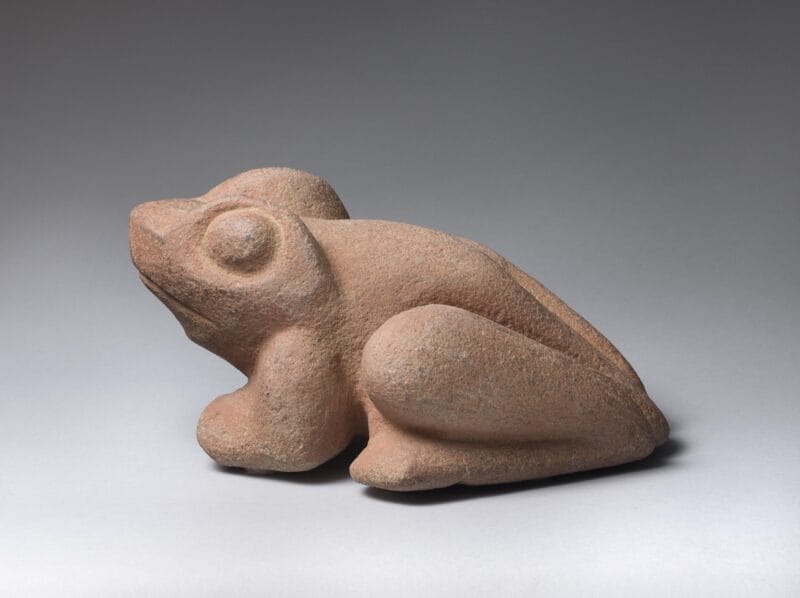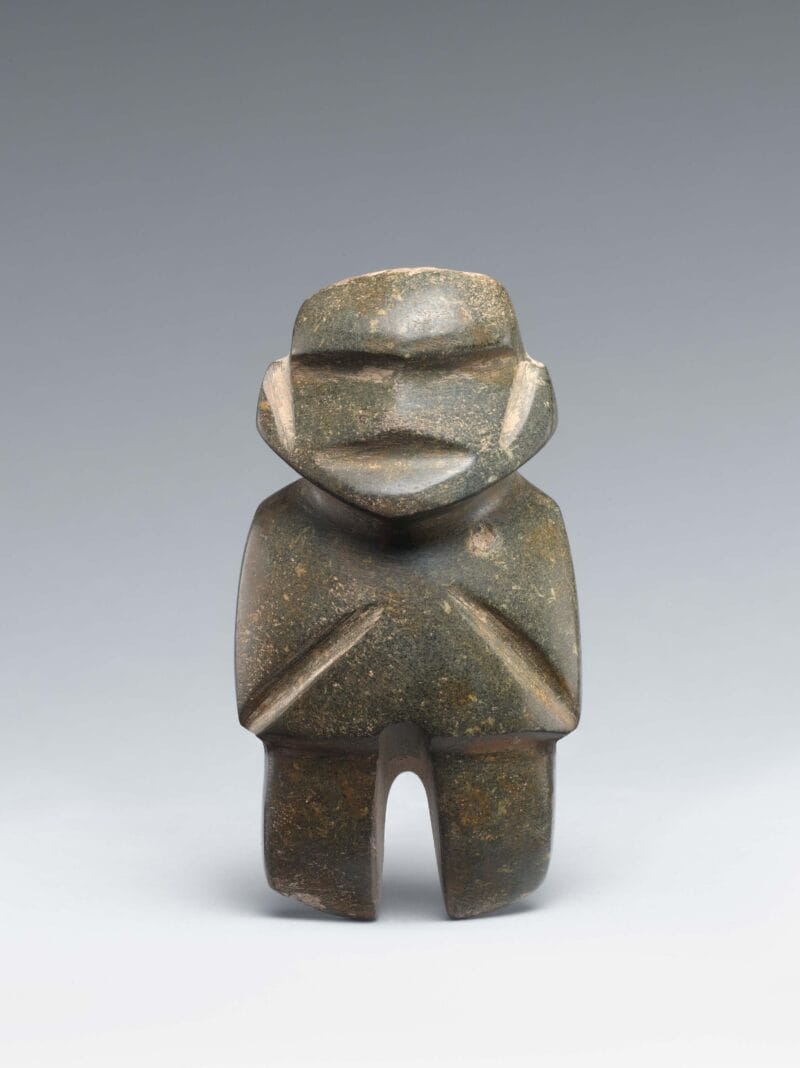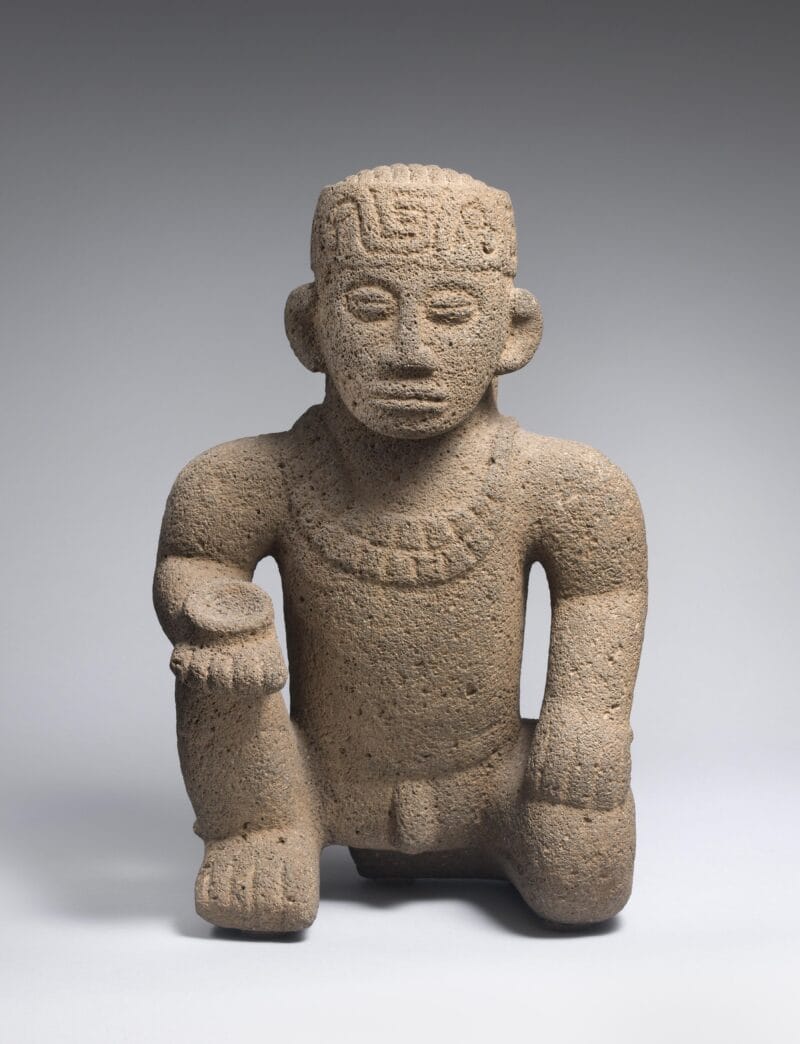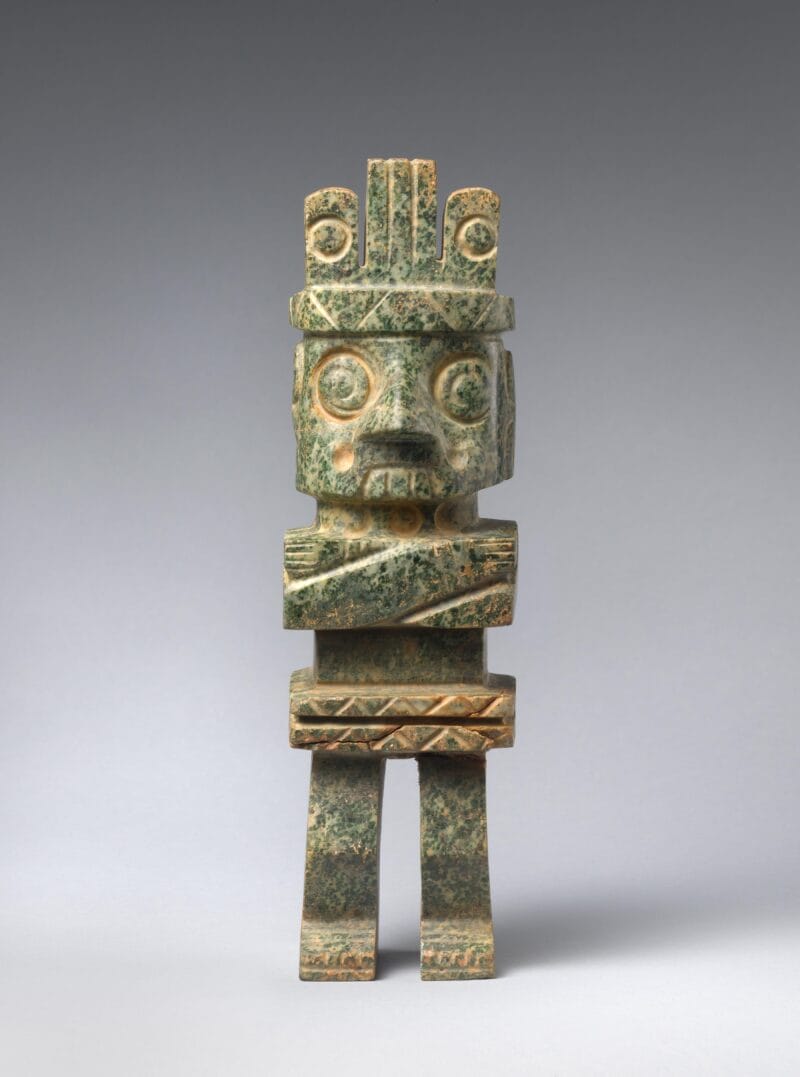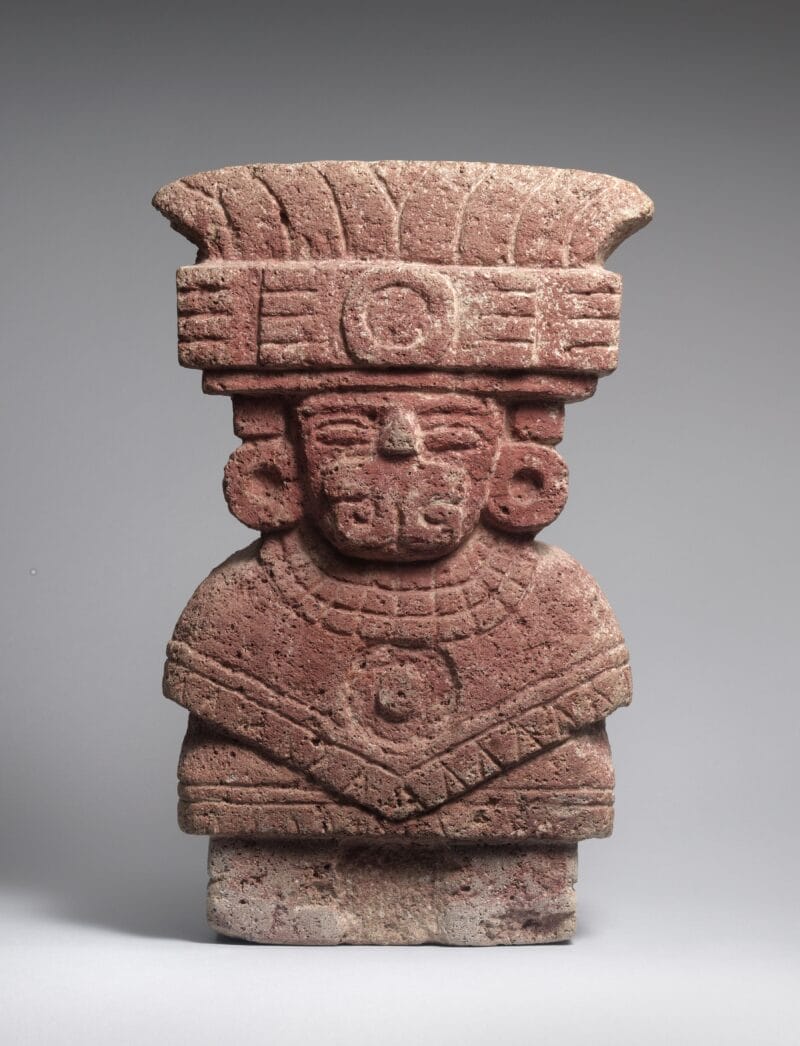
About the Object
Carved and chipped from volcanic stone and painted with red cinnabar, this work probably represents the “Great Goddess” of Teotihuacan, wearing an elaborate headdress that would have been created from the beautiful feathers of the native quetzal bird. There is still debate as to the exact importance (and even the sex) of the so-called goddess. However, most agree that the worship of the goddess became more pronounced from 200 CE onward, and that it was related to water, fertility, the cycle of life and death.
Additional Information
From about 100 BCE until 200 CE the monumental city of Teotihuacan arose in the Valley of Mexico. It eventually became one of the largest urban centers in the pre-colonial Americas with a population of about 200,000 inhabitants, who constructed magnificent architecture including some of the largest pyramids on Earth. Oral histories and archaeological excavations reveal that structures at Teotihuacan were built over caves perceived to be entrances to the underworld.
The civilization likely endured until around 600 CE. Pervasive evidence of highly selective fire reveals that the ruling elite of Teotihuacan lost legitimacy and were likely overcome by an angry populace, a foreign power, or both. When the Mexica (Aztecs) arrived in the Valley of Mexico centuries later, the site was shrouded in mystery, incorporated into Mexica beliefs, and eventually named Teotihuacan, or “Abode of the Gods” in the Mexica language, Nahuatl.
[Christie’s New York, November 11, 1996, lot 282];
[Throckmorton Fine Art, New York, NY];
The Jan T. and Marica Vilcek Collection, 1997-2010;
Gift to The Vilcek Foundation, 2010;
Christie’s. New York, Pre-Columbian and Colonial Works of Art, November 11, 1996, lot 282, ill.
Related Objects
You may also be interested in
Juan Pablo Contreras composes classical music with the sounds of Mexico

Felipe Baeza

Juan Pablo Contreras


